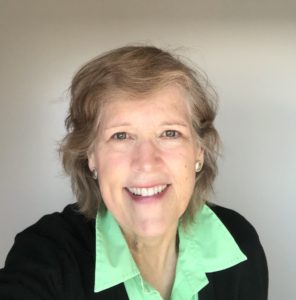By Patricia Houser
For Nature’s Sake

Patricia Houser
At 8 a.m. on a chilly winter morning in Milford, a figure in a bright orange jacket can be seen weaving back and forth along the sidewalk of Welch’s Point Road with mechanical grabber in one hand and bucket in the other, picking up trash on his daily walk.
The figure is Bill Bevan, a lifelong Milford resident, retired businessman and former marathoner, still very active in his community who also, since 1999, has included litter removal in his daily five-mile walks.
Across the world today there is a growing movement of combining exercise with litter pickup. In Sweden in 2016 it was dubbed “plogging” – a combination of the Swedish phrase “ploka upp,” meaning “pick up,” with the English, “jogging.” Today there are clubs across the world whose activities can be found on social media with the hashtag “plogging” or the version for walking while picking up trash, “plalking” (or for bird watchers, “plirding”).
None of those terms existed roughly 20 years ago when Bevan, realizing his marathon training days were over because of knee troubles, switched to walking and then gave in to the impulse to pick up the litter that he used to run past.
“I hated seeing the trash on the side of the road as I drove or ran by, let alone walk, and I said if I’m walking by it, I’m going to pick it up.” Someone else, says Bevan, came up with the description he likes best: “Walking with a purpose.”
Bevan has picked up hundreds of thousands of pieces of litter in Milford since 1999 – from cigarette butts and fast food debris to cans and bottles, bags of dog poop (one to two per day) and excess plastic-encased advertising supplements and catalogs. Starting in 2020 there have also been medical masks “in incredible numbers” on the roadside.
In slowing down to retrieve litter, Bevan becomes attuned to his surroundings in other ways. If a particular homeowner on his route can use a helping hand getting the garbage bin up a long driveway or someone with mobility issues can be helped by having their paper closer to the stoop, he’ll help with that too. His attention also extends to the wildlife and landscapes on his daily route. He notices, for instance, where erosion at a local stream’s edge is nearing the road itself and worries about small pieces of plastic that could harm an osprey or other birds that forage amidst the debris.
Bevan keeps records, by nature and habit, from his days of logging training runs. He has at times kept track of the percentages of beer cans versus soda cans versus water bottles, and even brand names of the most common products. He notes the prevalence among beer litter, for instance, of Budweiser and Bud Light for quite a while.
Many environmental organizations would applaud the impulse to track litter branding because it can help hold producers – not just the consumers – responsible for the damage of a “throwaway economy.” An audit of litter, sponsored by the nonprofit organization Break Free from Plastic, found that products from Coca-Cola, PepsiCo and Nestlé were the most numerous among litter in 239 cleanups across 42 countries and six continents.
Bevan’s diligence and longevity at litter removal marks him as something of a celebrity to Tony Samuelian, who began doing his own trash-cleaning route near Point Beach two to three years ago. Samuelian, a former teacher who is also a runner, considers litter retrieval part of a larger ethical responsibility akin to “leaving no trace” in campgrounds. He sees others who have begun the habit, and he has encountered a lot of appreciation from strangers.
“I’ve even had town employees stop me and thank me,” he said. “As a matter of fact, a woman stopped me in her car and she said, ‘I’ve been looking for you for a year’ and she gave me two gift certificates – she works somewhere where there was money put aside for acts of kindness.”
Bevan also talks about the appreciation for his “trash walking” hobby. “You get to meet so many people on these walks,” he said. “I took the walk one day in early spring with my wife, and it was in the morning – and she didn’t realize how many people, as they drive by, beep their horn, wave, yell out the window, encouraging things, you know.”
When asked if he ever gets discouraged by the nature of the task, Bevan answered, “No. No. The only time it might be discouraging is if I’m out on my walk and it starts to rain hard,” which he added tends to end a walk. “I look at is as a great treat to walk around and do what I’m doing. It’s like a gift, it really is.”
Patricia Houser, PhD, AICP, shares her exploration of local and regional environmental issues in this column as a member of the nonpartisan Milford Environmental Concerns Coalition.